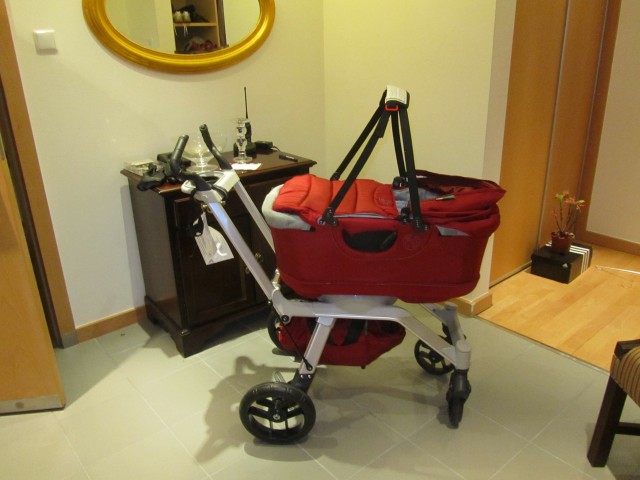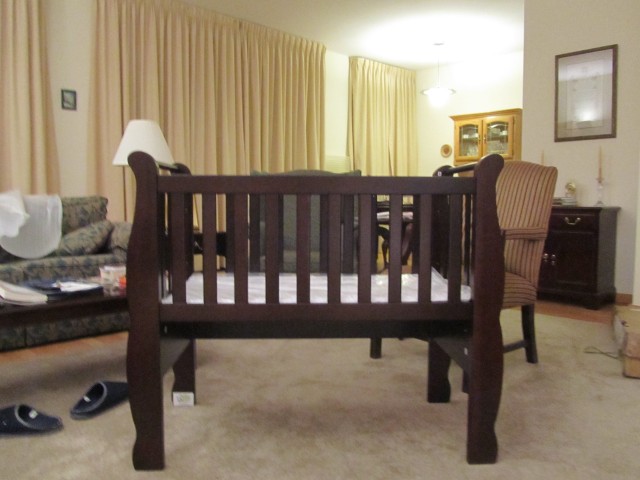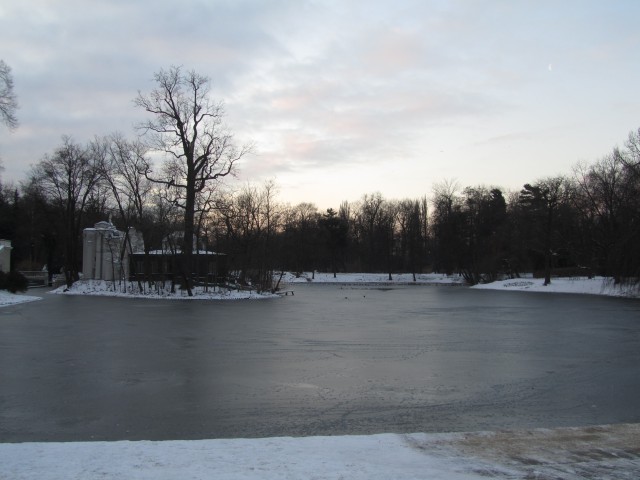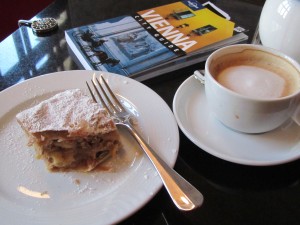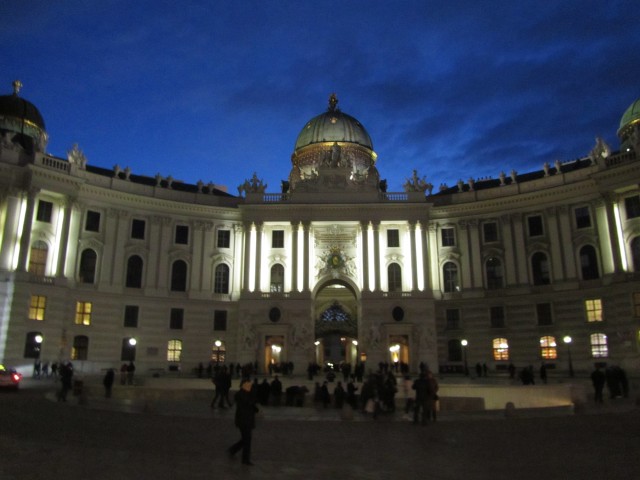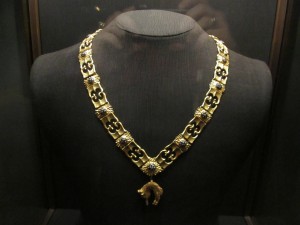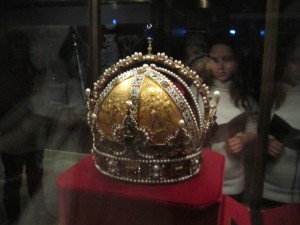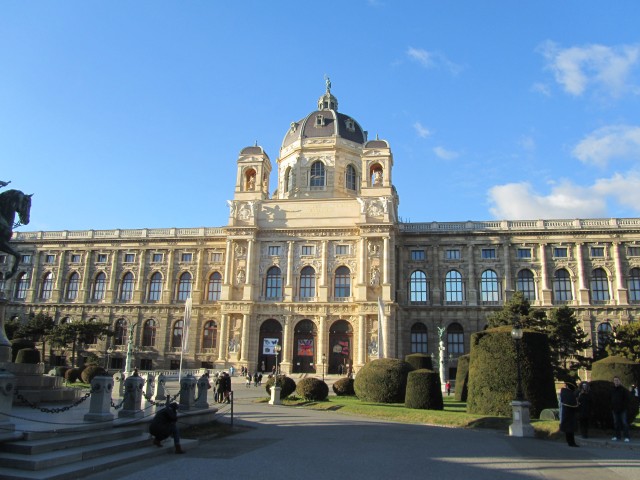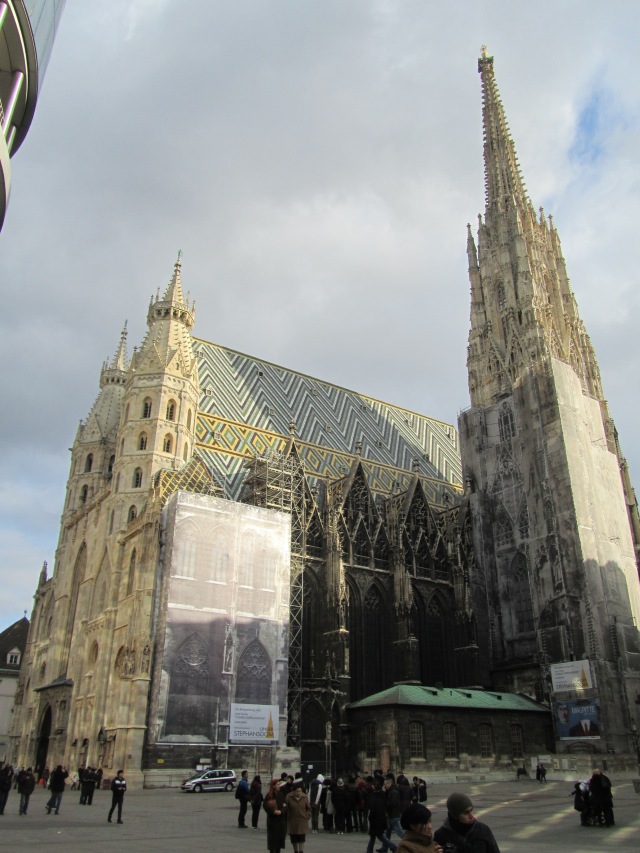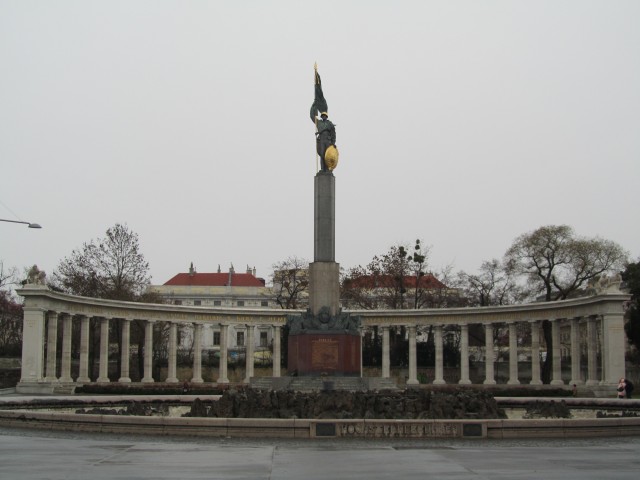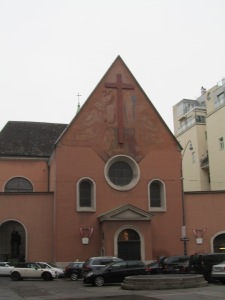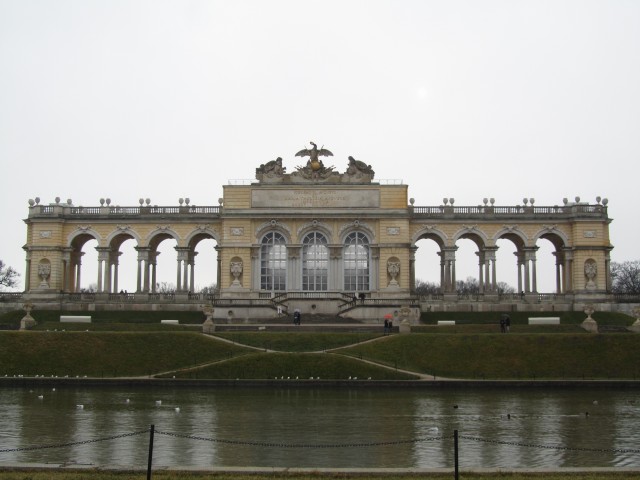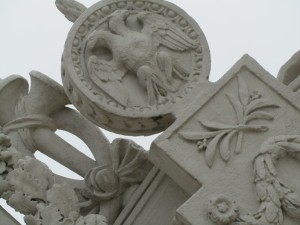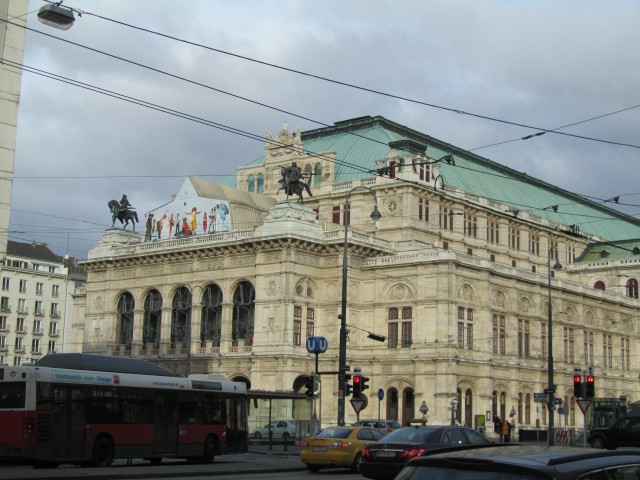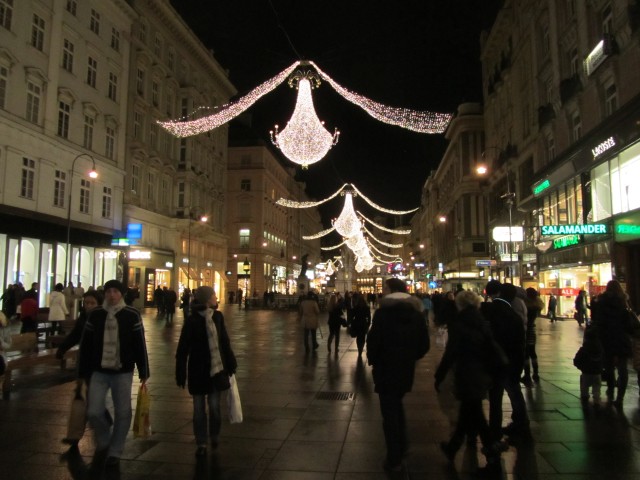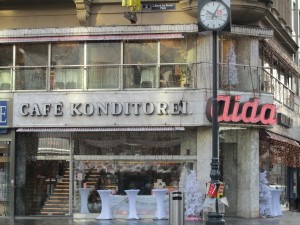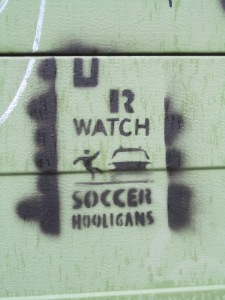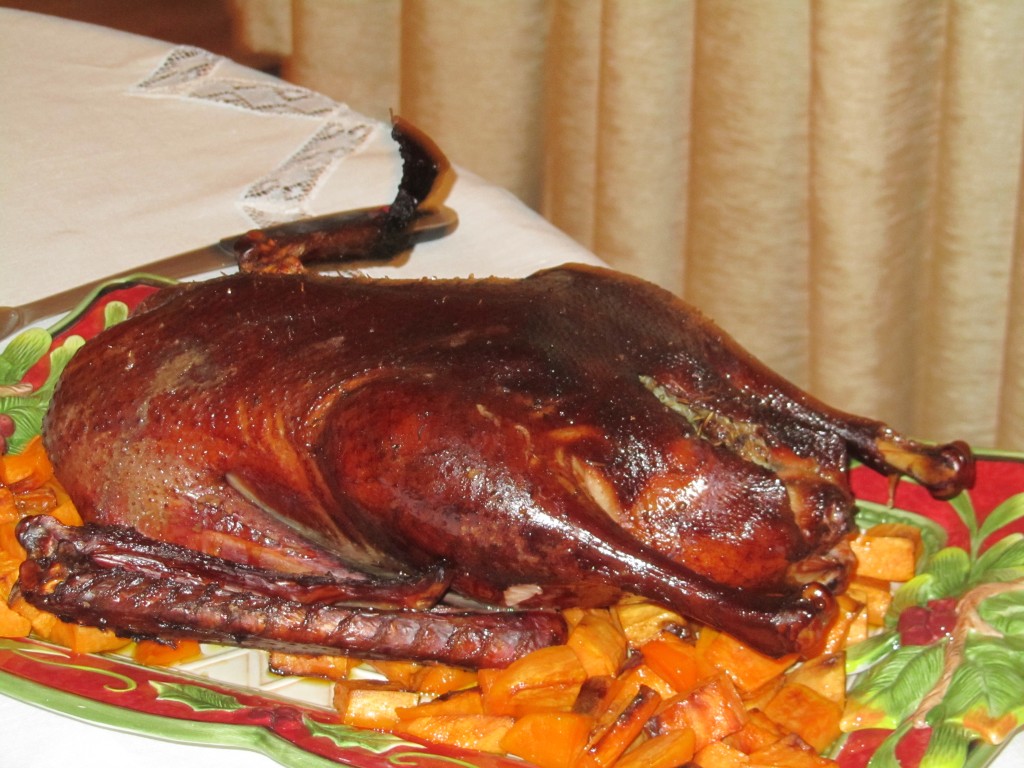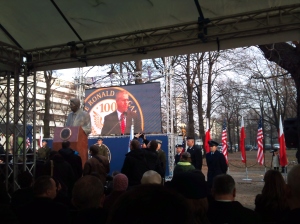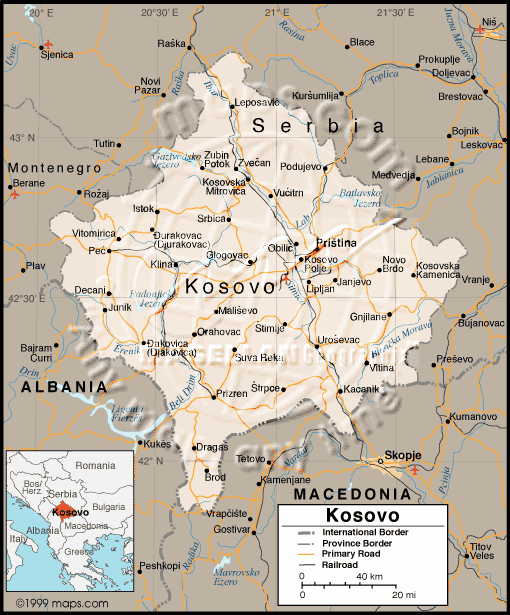
Kosovo
Given the roaring success of our last Balkan trip, my two intrepid Foreign Service companions and I decided it was high time for another adventure. What better place than Kosovo– another Balkan republic carved out of the former Yugoslavia, and one of the newest countries in the world. Kosovo is about as far off the beaten path as European nations get. Touring this ancient land but brand new nation proved quite moving, and though travel in the region presents its own challenges, I highly recommend a visit for those of you itching to do something different.
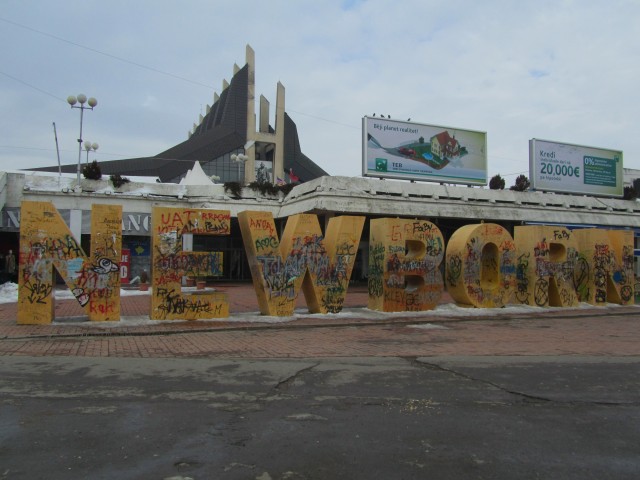
Newborn-- Downtown Pristina's Monument to Independence
First things first, a (very) quick modern history of Kosovo. Unlike most of the other independent successor nations to the former Yugoslavia, Kosovo was not one of the constituent republics of the Socialist Federal Republic of Yugoslavia. Although the majority of the population has long been ethnically Albanian and religiously Muslim, the region was in fact a part of the Socialist Republic of Serbia during the Yugoslav era. For a variety of complex historical, cultural, and religious reasons which I cannot hope to cover in a blog post, Serbia and Serbia have long viewed Kosovo as an integral part of Serbia, and tensions between the Albanian majority and Serbian minority have simmered for centuries.
Following the 1995 Dayton Accords which saw the disintegration of Yugoslavia, the simmering tensions boiled over. The Kosovo Liberation Army (KLA) took up arms against the Serbian security forces in the region in 1996. Ever worsening violence and war led to multitudes of displaced people and due to gross violations of human rights and the threat of instability, NATO and the United States intervened in 1999 by bombing Belgrade and bringing the Serbian government to the table to negotiate a ceasefire.
According to the terms of the ceasefire, from 1999 the Kosovo region was administered under the United Nations Interim Administration Mission in Kosovo (UNMIK) with security provided by NATO led Kosovo Force (KFOR). On February 17, 2008, with no final resolution of Kosovo’s ultimate status in sight, the Republic of Kosovo formally declared independence. The United States and 88 other UN member states recognize Kosovo as an independent nation, although Serbia has not yet done so and neither have a number of other countries who have varying reasons for not doing so.
I apologize for the whirlwind tour of recent Balkan history, and I am sure historians of all stripes will find room to quibble. In any event, my point here is to offer some context and understanding of Kosovo’s recent history and not to offer up a complete volume of Kosovo’s history. Maybe one day, though, after I write my book on the Hapsburgs.
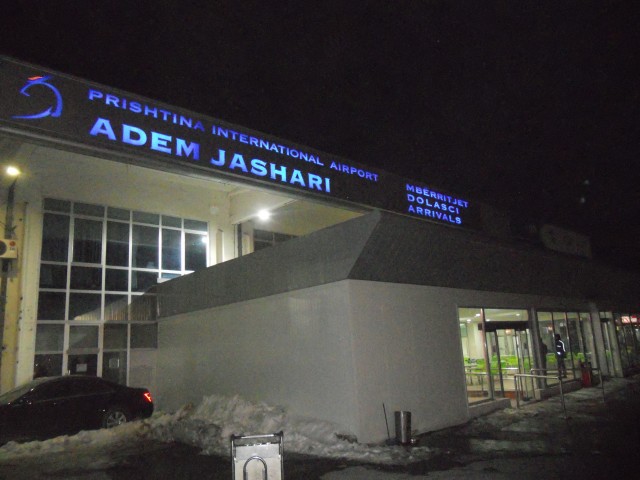
Adem Jashari Airport. Adem Jashari was one of the KLA's most important leaders.
We landed in Kosovo on February 18th– the Republic of Kosovo’s fourth birthday. The entire region had just been hammered by a blizzard and so the countryside was buried under several feet of snow. This made driving Kosovo’s already challenging roads an adventure, to say the least. A good Polish friend of ours, in Kosovo working with an international organization, met us at the airport and helped us find our way to our hotel in downtown Sarajevo. We spent the rest of the night ringing in Kosovo’s independence to achingly loud Albanian music at a local hot spot.
One thing that will strike any visitor to Kosovo: this is probably the most pro-American nation in the world, maybe even more so that the United States itself. The Kosovars fly three flags all over the country– Kosovo’s, Albania’s and the Stars and Stripes. Exceedingly grateful to the aid rendered by the U.S. and NATO during the war, most towns features streets named after Bill Clinton, Wesley Clark, Madeline Albright, and George W. Bush. The locals, upon finding out you are American, often thank you in person on behalf of the whole nation.
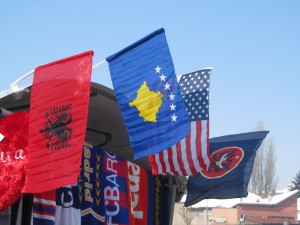
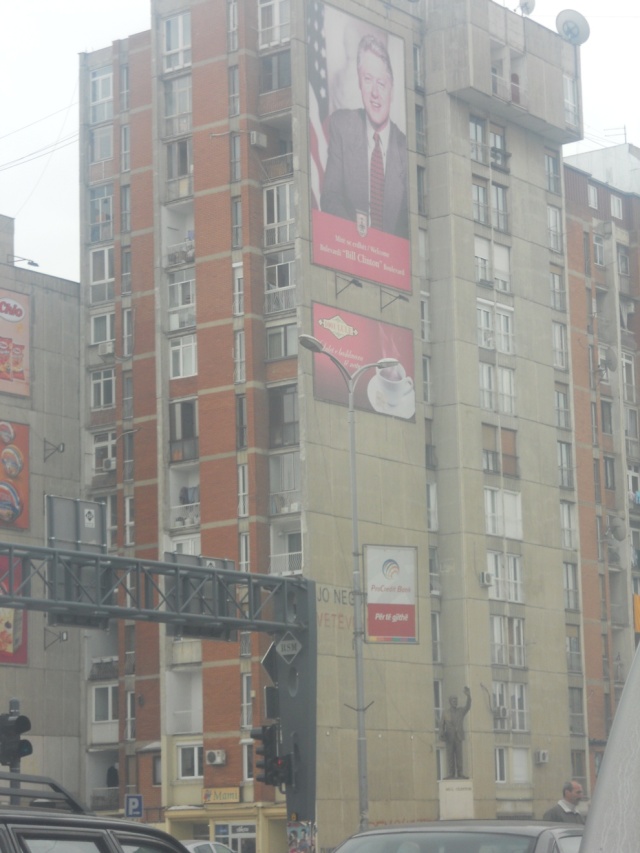
Bill Clinton stands sentinel over his street in Pristina
We got up early the next morning to start our road trip, which would cover most of the country. Day one: Pristina to Peje (Serbian Pec), to Decani and its famous monastery, to Prizren, Kosovo’s most tourist friendly city. Day two: Prizren to Gracanica, a Serbian enclave with another famed monastery, then back into Pristina for the night.
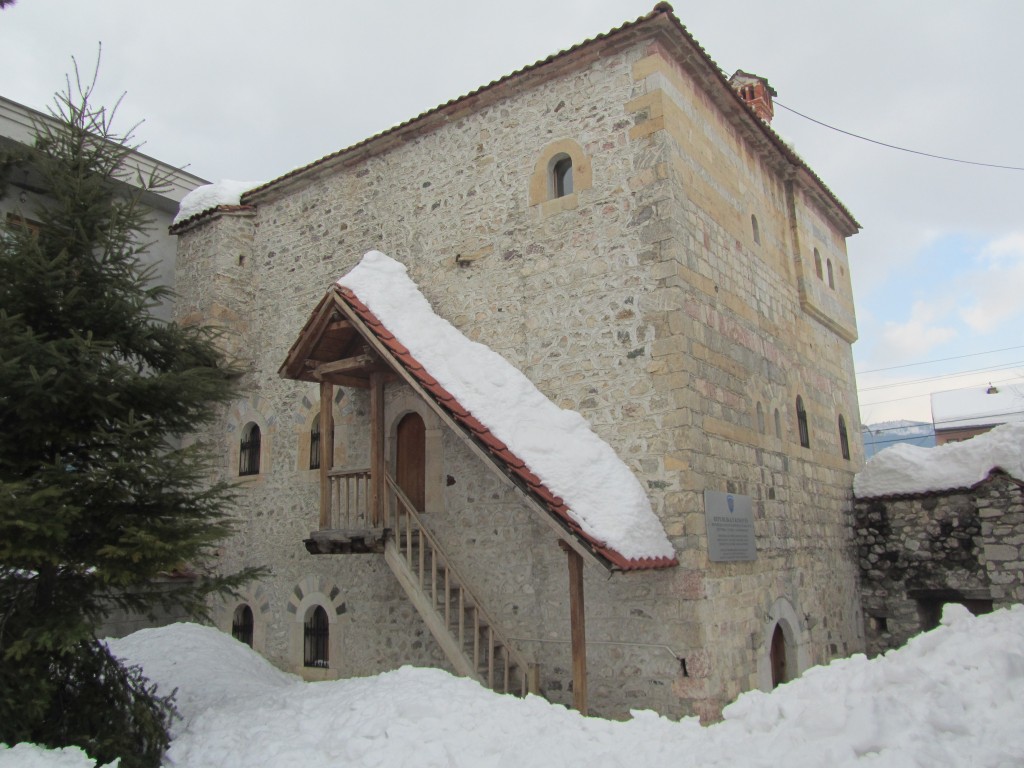
An Albanian Fortified Stone House in Peje
Peje is a city in Western Kosovo that saw heavy fighting during the war. It’s also home to one of the most revered sites of the Serbian Orthodox– the Patriarchal monastery of the Serbian Orthodox Church. The town has spectacular mountains as a backdrop, and the monastery itself is set inside of a pristine valley with an icy stream running right by. We spent most of Saturday afternoon in Peje, and one of the highlights was lunch with a local doctor and business leader, who took the time to offer his perspective on Kosovo’s history, present, and future. He was a truly generous and warm man, and though I won’t delve into all the things we talked about here, I can say that it was a highlight of the trip. We drove out to the monastery and talked the Slovenian KFOR troops guarding the site into letting us in the gate and up to the monastery walls. Unfortunately, the nuns were not accepting visitors at the time. The presence of the Patriarchate and other Serbian Orthodox monasteries and churches serves as one of the main reasons Kosovo’s status remains so painful for many Serbs.
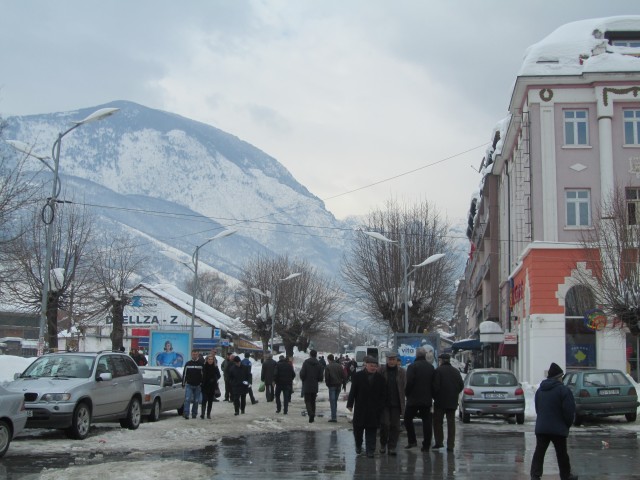
Peje Street Scene
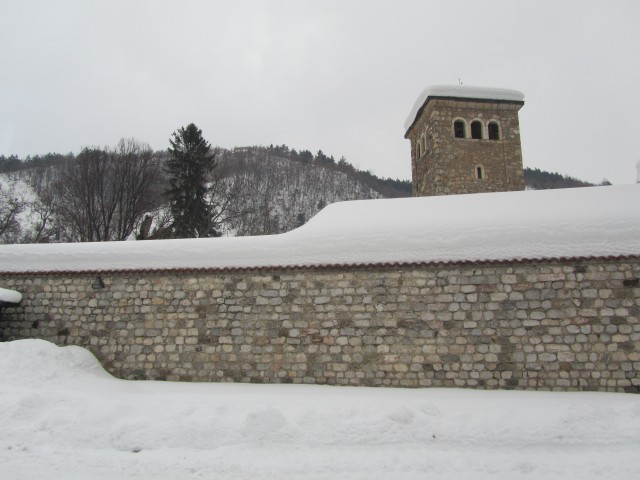
The Patriarchal Monastery Walls
Luckily for us, the brother monks at the famed Visoki Decani monastery about 20 miles to the south did let us inside the walls. We were waved on in by two cold-looking Italian KFOR soldiers. Visoki Decani is a spectacular example of late Byzantine style architecture dating from the early 14th century. It was established by Serbian King Stefan Uros III Decanski, as the Serbs were consolidating their power in the region and building the medieval Serbian Empire. The frescoes inside the church are some of the finest and best preserved in the world. They are both splendid examples of Orthodox iconography and contain early hints at the realism of the renaissance. A kindly monk not only unlocked the Church of the Ascension of our Lord for us, but lit all the lamps and candles and explained to us, in a mixture of Serbian, Russian, and Polish about the frescoes, icons, relics, and treasures therein. Just another example of the warmth we found throughout the country, regardless of who we talked with. Unfortunately, it’s impossible to get good fresco pictures inside of the candle lit church.

Visoki Decani Monastery's Church
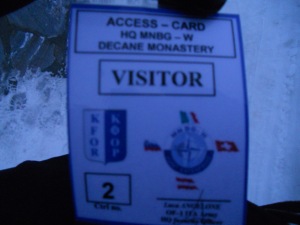
No one gets into most monastery sites without a KFOR visitor's pass
From Decani we drove to the southeast into Prizren, for centuries Kosovo’s most important city and a gem of Ottoman architecture. Prizren was the headquarters of the late 19th century League of Prizren, a defensive pact of mostly Muslim (but some Catholic) Albanian clan leaders who sought to keep Kosovo in the Ottoman Empire, swore allegiance to the Sultan, and fought for the right to be ruled by traditional Albanian and Islamic law. The town features a lovely cobblestone square, 16th century mosques, several 14th century churches, an important dervish house, and a medieval castle standing sentinel on a hill. As everywhere in Kosovo, the mountains are a spectacular backdrop.
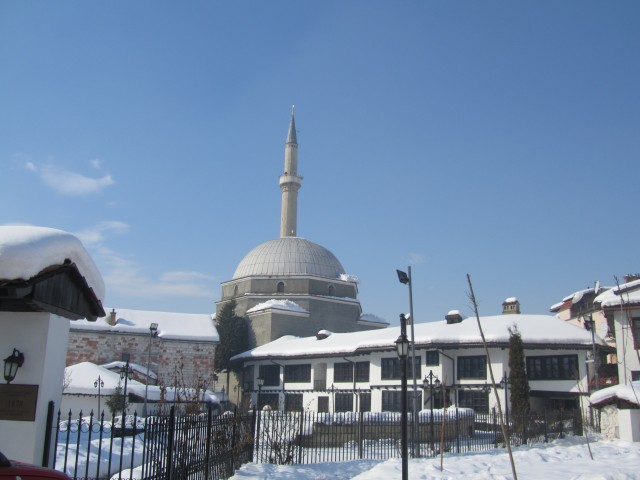
League of Prizren Complex
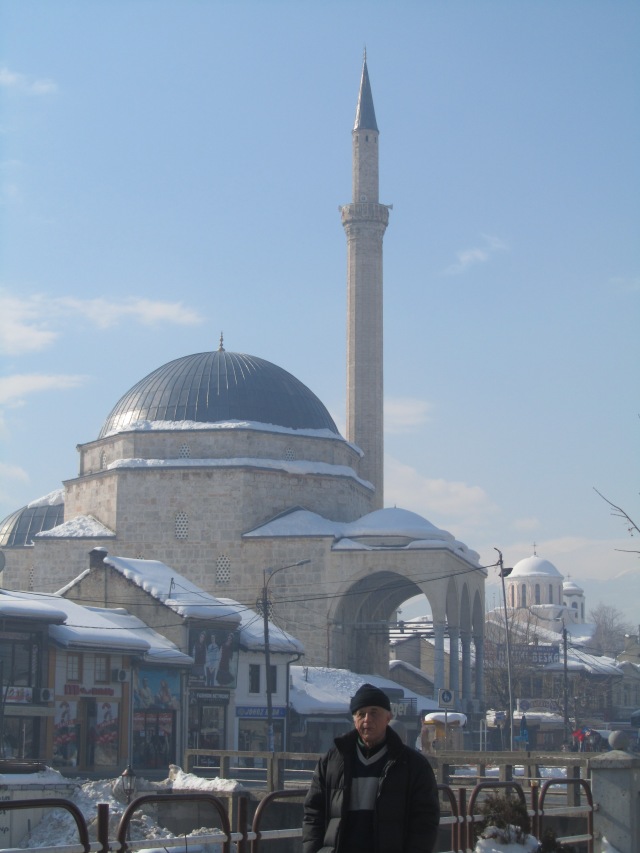
One of Prizren's Ottoman Era mosques

A centuries old stone bridge spanning the river flowing through town
We spent Sunday morning exploring Prizren and environs, then turned back northwards towards the capital of Pristina to complete our circuit of the country. Along the way we stopped at Gracanica. Gracanica is a Serbian majority town not far from the capital of Pristina, and home to another architectural jewel of a monastery. Inside the city limits, signs are all in Cyrillic and you hear Serbian on the streets. The sister nuns here were also warm and welcoming, and invited us in to see the church. The frescoes here are equally as spectacular, and equally as important, though unfortunately some have been defaced.
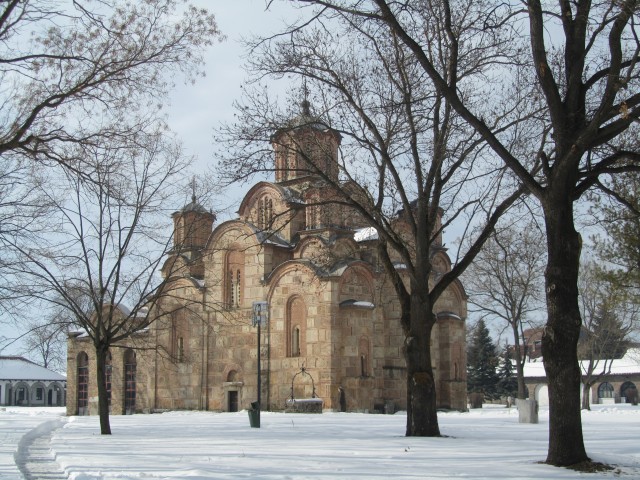
Gracanica's Church
Finally, we turned towards the homestretch and Pristina. We had coffee with a young mathematics professor from the University of Pristina who had spent some time in the U.S. As with the doctor in Peje, the conversation was enlightening and entertaining, and we left with a deeper understanding of present day Kosovo and the young generation’s hope for the future. Later that evening we had a traditional Albanian dinner in an old Ottoman house.
Our trip to Kosovo wouldn’t have been complete without a trek to the nation’s most famous site, and perhaps the main reason why Kosovo retains such a special place in the Serbian national imagination. Kosovo Polje, or the Field of Blackbirds, is a few miles outside of downtown Pristina. In 1389, two medieval armies met in battle there, one led by the Serbian Prince Lazar and the other by the Ottoman Sultan Murad I. The historical sources are not entirely clear about the actual outcome– was it a hard-fought, close won Serb victory, or an equally hard fought, hard won victory for the Ottoman side. Both leaders died during the battle, of that there is no doubt, and there is also no doubt that the battle spelled the end of the Serbian Empire and the beginning of centuries of Ottoman dominance in the Balkans.
The story of Kosovo Polje is integral to Serbian identity, and central to Kosovo’s tragic 20th century history. Not far from here, Slobodan Milosevic announced in 1987 to a crowd of Serbs who were complaining of poor treatment by local Albanian police that “no one will beat you ever.” He would return in 1989 to the monument itself, and deliver another famous speech, with tensions in Yugoslavia already reaching a boiling point. These speeches and remarks,with clear allusions to 1389, jump-started his career, a career which would end with him on trial at The Hague for crimes against humanity. I’m not here to debate Balkan history, medieval or present, but anyone who wants to even try to understand it should turn off the highway to the monument at Kosovo Polje and read the inscription, a quote from Prince Lazar, at the base.
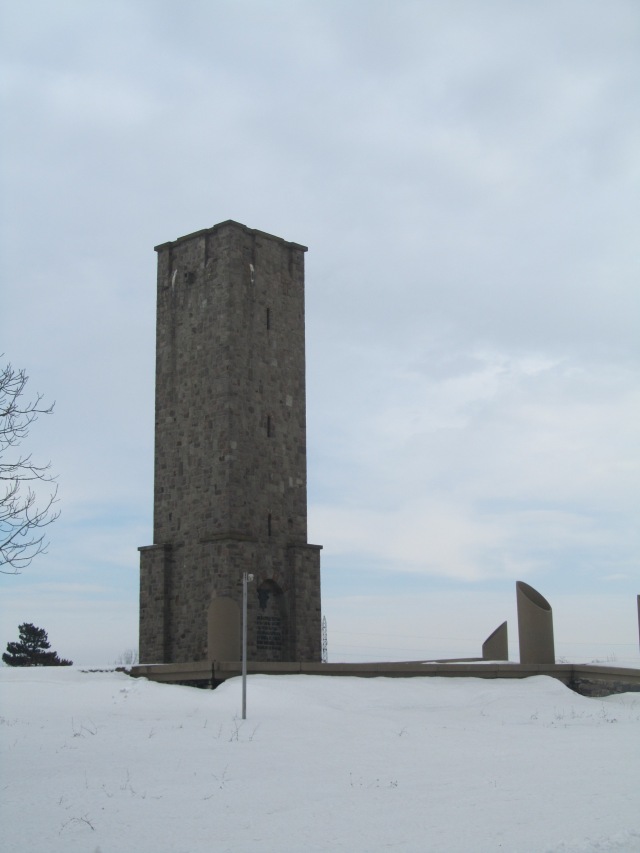
- “Whoever is a Serb and of Serb birth
- And of Serb blood and heritage
- And comes not to the Battle of Kosovo,
- May he never have the progeny his heart desires!
- Neither son nor daughter
- May nothing grow that his hand sows!
- Neither dark wine nor white wheat
- And let him be cursed from all ages to all ages!”
This post likely marks my final Balkan journey during this European posting, at least. I have a bundle of joy on the way and can’t keep running off on adventures. The region remains to me a fascinating and beautiful place, a place I could spend a lifetime trying to understand. We left Kosovo on Monday afternoon, richer for our travels, and especially for the kindness and openness we found wherever we roamed.

